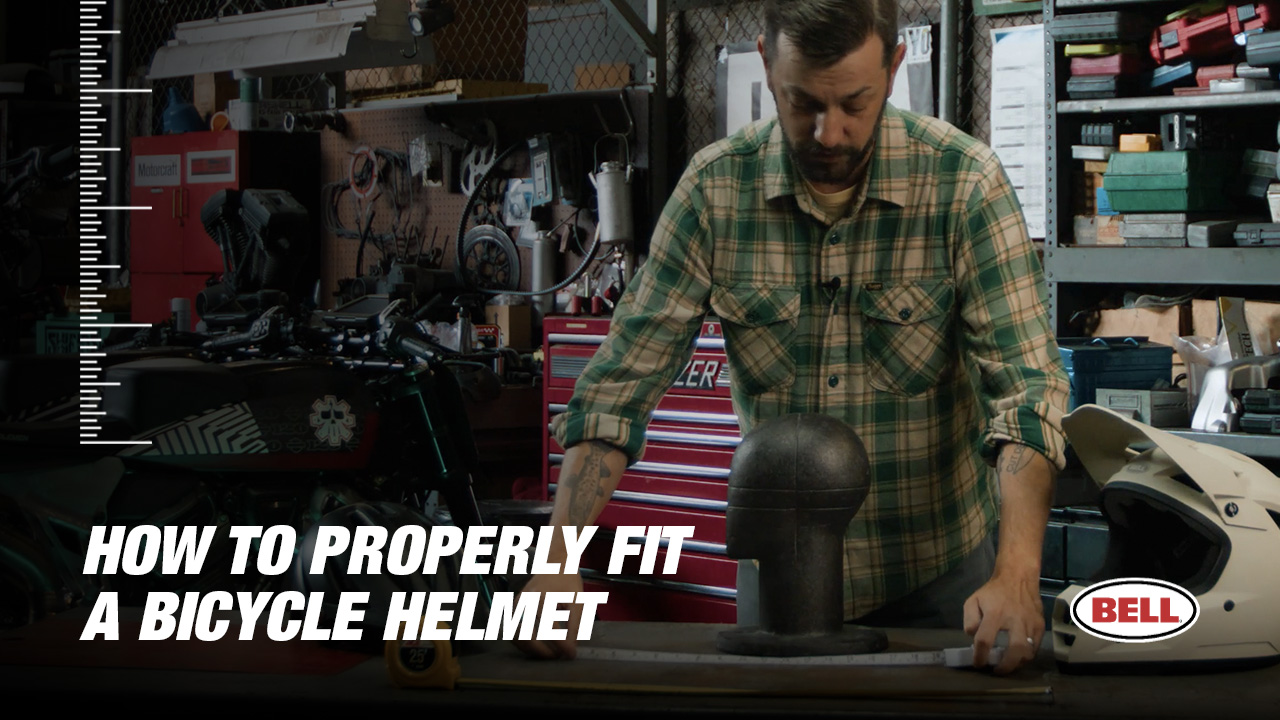How To Measure For A Bike Helmet
You can find you helmet size by measuring your head circumference. Utilize a flexible measuring tape or a piece of string for this task. If opting for a measuring tape, encircle your head approximately an inch above your eyebrows, then consult our size chart to identify your size. Alternatively, if using a string, follow the same head measurement process and then measure the string against a standard measuring tape or yardstick for accurate sizing.
Another useful tip for finding your helmet’s size is knowing your hat size. If you know your hat size, you can use that measurement as well (Centimeters, inches, head size —It's all going to get you the same thing).
Where Do I Find Bike Helmet Size Charts
Once you've measured your head, refer to the product page. Locate the size chart and click on it to find your size based on your measurement. Your measurement will correspond to a specific size range.
How To Customize Your Helmet’s Fit
Each size helmet is going to fit a variety of head sizes. The beauty of our half shell system is that we have what's called a Float Fit. The Float Fit as just a dial in the back of the helmet that allows you to dial in the fit on the helmet. So put the helmet on loose, take the Float Fit, dial it in so that it's nice and snug.
How To Fit a Full-Face Bike Helmet
Ensuring the proper fit for a full-face bike helmet involves a slightly different process compared to fitting a half shell. Both processes will start with measuring your head circumference. However, the fit for a full-face is personalized by adjusting the padding to achieve optimal comfort and safety.
Many full-face helmets have additional pads included or they are available for purchase separately. Take the Bell Full-10 as an example; it includes three different thicknesses of cheek pads and two different thicknesses of crown pads This allows you to tailor the fit according to your preferences, ensuring a comfortable and secure fit. If you newly installed pads feel a bit tight, take a few rides to allow them to break in and pack out. This will give the pads the opportunity to conform to your head shape for a more comfortable fit over time.
How To Wear a Bike Helmet
Place the helmet on your head so that it sits level, covering your forehead. The front rim should be about one to two finger-widths above your eyebrows. Adjust the side straps so that they form a Y-shape under your ears, with the front strap sitting just below the earlobe. Tighten the straps until they are snug but comfortable.
How Should a Bike Helmet Fit?
It’s important to consider how tight or loose your helmet fits. You don't want it to be so tight that it's leaving a crease on your forehead, but you want to make sure that it's not loose and moving around. Shake your head gently from side to side and up and down. The helmet should stay in place and not shift around. If it does, readjust the straps until the fit is secure.
Different Helmet Buckles
Traditional Plastic Buckle: This buckle style is common in numerous standard bicycle helmets. To operate, it features a pinch-side release snap mechanism.
FIDLOCK: Featured on newer and most premium models, a FIDLOCK helmet buckle is a magnetic fastener. Comprising two magnetic components, this buckle securely fastens when the two sides are brought into close proximity. Its design facilitates one-handed operation and ease of use, even when wearing gloves.






